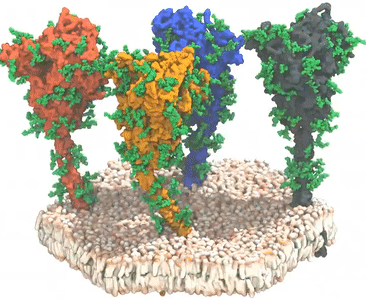A Brief History of Viruses
It was around the year 1590 when mankind figured out how to use optical lenses to bring into sight things smaller than the natural eye can observe. With the invention of the microscope, a new and unexplored world was discovered. It will likely be of great surprise to the reader that scientists of the time did not believe that within this new microscopic realm lay the source of sickness and disease. Most would still hold on to a belief of what was known as Miasma theory, which dates back to the Roman Empire. This theory states that the source of disease was contaminated air through decomposing organic materials. It wouldn’t be until the 1850’s that a man by the name of Louis Pasteur, from whom we get “pasteurization”, would promote Germ Theory into the spotlight of the sciences.

Pasteur, considered by many as the father of microbiology, would go on to assist fellow biologist Charles Chameberland in the invention of the aptly named Pasteur Chamberland filter — a porcelain filter with a pore size between 100 and 1000 nanometers. This was small enough to filter out the microscopic bacteria and cells known at that time from a liquid suspension, leaving behind a supply of uncontaminated water. But like so many other early scientific instrumentation inventions it would lead to the discovery of something unexpected. In this case, a world far smaller than 100 nanometers… and add yet another dimension to the ever-shrinking world of the microscopic.
This is when we began to learn about viruses.
Discovery of the Virus and the Vaccine
The word “virus” stems from the Latin phrase “slimy fluid“. In 1898, a man by the name of Martinus Beijerinck passed a solution containing a still unknown infectious agent that targeted tobacco plants through a Pasteur Chamberland filter. The purified solution was applied to a healthy tobacco plant and to his great surprise the plant became infected. He concluded that the infectious agent was unfilterable, and took an even further leap to describe the infectious agent as a “living liquid”.

In that same year, a pair of German scientists, Friedrich Loeffler and Paul Frosch, performed the same experiment which returned the same results with what we now know as Foot-and-Mouth Disease (FMDV) in livestock. They, however, did not agree with Beijerinck’s conclusion of the infectious agent being a living liquid. But instead believed it to be a particulate that was smaller than the porcelain filter pore size. They pushed forward with their belief by heating the filter element to “destroy the agent’s infectivity”, though it was not clear to them as to how heat destroyed it. Nevertheless, they were successful in creating an FMDV vaccine for cows and sheep from the infectious solution that was passed through the heated filter, which put more precedence on understanding a virus as an ultrascopic living particulate, and not a living liquid.
It should be noted that the smallpox vaccine was widely used at this time, though no one had any understanding of how it worked or what it even was. Indeed, the term vaccine is derived from the Latin word vacca, which translates directly to cow. This odd relationship owes its history to the somewhat accidental discovery that milkmaids who often contracted a very mild disease called cowpox did not get infected with the much more severe smallpox disease. In 1796, a cruel experiment was performed by a man named Edward Jenner. He took puss from a cowpox blister and purposely infected a young boy. Once the boy recovered, he repeated the process with smallpox and found that the boy did not get the disease. Jenner’s vaccination technique would not only go on to save millions of lives from smallpox; it would be used to vaccinate people from several other diseases, including polio and yellow fever.
The Birth of Molecular Biology

The next few decades would identify hundreds of viruses of all shapes and sizes, and along with them various types of vaccines. But it was the study of exactly what these viruses were and how the vaccines actually worked that would give rise to a revolutionary new science — molecular biology.
New technologies such as electron microscopy, along with other advances in scientific understandings would show that viruses are some of the smallest lifeforms on earth. It could even be argued that they’re not alive at all… an debate that carries on to this day. Our own [Dan Maloney] has written several articles on the details of how viruses and our immune system work at a molecular level. And the clever ways we try to stop viruses. However, there is still much to be learned.
Understanding viruses at the molecular level presents a very real modern day challenge. Despite the full power, wealth, and knowledge of our modern civilization, a tiny packet of RNA enclosed in a fatty drop continues to wreak havoc on our world. The COVID-19 virus has in some shape, form, or fashion effected every single human being on earth. Those viruses once invisible to us now stand before our very eyes in full view, and yet we have suffered terrible losses to this one. Our best tool is a breakthrough barely 30 years old — our ability to tailor messenger RNA (mRNA) a targeted purpose — has very quickly led to a viable vaccine. There is no doubt in my mind that eventually this virus will succumb to the might of human ingenuity that has been unlocked by more than a century of cumulative scientific knowledge.
Post a Comment